A Self-Assessment Guide for Health Care Organizations - IFC
A Self-Assessment Guide for Health Care Organizations - IFC
A Self-Assessment Guide for Health Care Organizations - IFC
You also want an ePaper? Increase the reach of your titles
YUMPU automatically turns print PDFs into web optimized ePapers that Google loves.
Measurable Element Look <strong>for</strong> Score Observations<br />
What is required<br />
3) The infection control<br />
program includes<br />
systematic and proactive<br />
surveillance activities to<br />
determine usual (endemic)<br />
rates of infection and<br />
outbreaks of infectious<br />
diseases.<br />
4) The organization has<br />
established the focus of<br />
the infection control<br />
program to prevent or<br />
reduce the incidence of<br />
health care–associated<br />
infections, e.g:<br />
a. respiratory tract<br />
infections are included<br />
as appropriate to the<br />
organization, 37<br />
b. urinary tract infections<br />
(UTI) are included as<br />
appropriate to the<br />
organization, 38<br />
c. intravascular invasive<br />
devices are included as<br />
appropriate to the<br />
organization, 39<br />
d. surgical wounds are<br />
included as<br />
appropriate to the<br />
organization, 40<br />
e. epidemiologically<br />
significant diseases and<br />
organisms are included<br />
as appropriate to the<br />
organization and its<br />
community, and<br />
f. emerging or<br />
reemerging infections<br />
are included as<br />
appropriate to the<br />
organization and its<br />
community. 41<br />
How is this element<br />
assessed<br />
The infection control plan or<br />
policies/procedures describe the<br />
surveillance process. Surveillance<br />
data are documented.<br />
Hospital-associated infections are<br />
routinely monitored, e.g.<br />
pneumonia (particularly ventilator<br />
associated), UTI, blood stream<br />
infections and surgical wound<br />
infections. The data are collected<br />
and rates of infection graphed.<br />
Comparisons are made across time<br />
and against regional or<br />
international rates.<br />
0 5 10 Why did you give this score<br />
........................................................<br />
........................................................<br />
........................................................<br />
........................................................<br />
........................................................<br />
........................................................<br />
........................................................<br />
........................................................<br />
........................................................<br />
........................................................<br />
........................................................<br />
........................................................<br />
........................................................<br />
........................................................<br />
........................................................<br />
........................................................<br />
........................................................<br />
........................................................<br />
........................................................<br />
........................................................<br />
37<br />
Coffin SE, Klompas M, et. al Strategies to prevent ventilator-associated pneumonia in acute care hospitals. Infection Control and Hospital Epidemiology. vol. 29,<br />
supplement . Available at www.azdhs.gov<br />
38<br />
Lo E, Nicolle L, et.al Strategies to prevent catheter-associated urinary tract infections in acute care hospitals. Infection Control and Hospital Epidemiology. vol. 29,<br />
supplement 1<br />
39<br />
Marschall J, Mermel LA, et al. (2008) Strategies to prevent central line–associated bloodstream infections in acute care hospitals. Infection Control and Hospital<br />
Epidemiology. vol. 29, supplement 1<br />
40<br />
Anderson DJ, Kaye KS, et al. (2008) Strategies to prevent surgical site infections in acute care hospitals. Infection Control and Hospital Epidemiology. vol. 29,<br />
supplement 1<br />
41<br />
Dubberke ER, Gerding DN, et al. (2008) Strategies to prevent Clostridium difficile infections in acute care hospitals. Infection Control and Hospital Epidemiology.<br />
vol. 29, supplement 1. Available at: www.wvidep.org/Portals/31/infection%20control/SHEA%20Prevent%20C%20dif%20in%20Acute%20<strong>Care</strong>%20Oct08.pdf<br />
<strong>IFC</strong> <strong>Self</strong>-<strong>Assessment</strong> <strong>Guide</strong> <strong>for</strong> <strong>Health</strong> <strong>Care</strong> <strong>Organizations</strong> 45



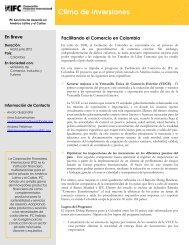
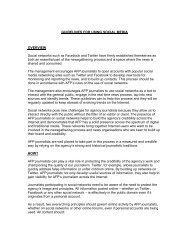


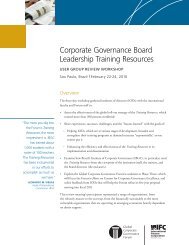


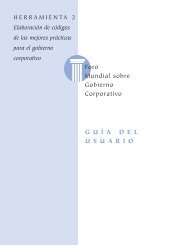

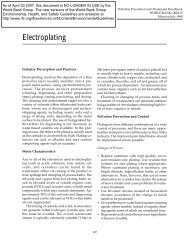

![Print a two-page fact sheet on this project [PDF] - IFC](https://img.yumpu.com/43449799/1/190x245/print-a-two-page-fact-sheet-on-this-project-pdf-ifc.jpg?quality=85)


